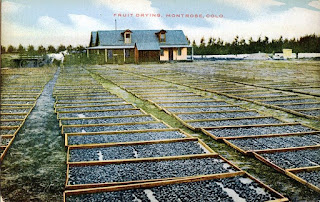By CSU Horticulture Agent, Linda Langelo
Photo credit: Pamela Hubbard, Master Gardener Penn State
Create a journal. Keeping a history of your garden successes, failures, innovative ideas, cultivars, weather or whatever you want to record. We know what George Washington did because he wrote it down. Without his journals and those of his predecessors, we would not have a "picture" of gardening techniques and varieties used during their time. But it is more than that. His comments and thoughts on what he did. More importantly, who would be around to tell the story of their gardens?
You don't have to be a fabulous writer. It's your journal. If you want to keep track of weather and varieties for your vegetable garden only, you have the freedom to do so. Most of all, if you are like me, I don't like making the same mistake twice.
I know there are lots of apps and garden programs online to help you with your gardening such as growveg.com with everything at your fingertips. Some services may be free and some have a cost. However, your garden journal can't be hacked, lost in the cloud or locked on a computer. You can reach over and pull it off the shelf or out of the drawer without having to remember the login passwords to your accounts. Ease of access, at your fingertips and within your budget, your own three-ring binder journal. Remember those? If you ever sell your home, you have plans and plant names recorded and can make copies to pass along to the next owner.
If you don't want to use a three-ring binder and create your own journal, there are plenty on the market. Have an artistic flare? Do a gardening journal scrapbook and pass it onto the grand kids.
Here is a suggested short list of what you can record:
- Vegetable Garden Section:
- crop rotation
- varieties
- soil amendments/fertilizers
- sprays
- last soil test
- Landscape Beds:
- A plan for each bed
- Record of established plants and new ones
- Record of problems in the beds, if any and solutions
- Different reminders for deadheading or pruning or other cultural care
- Seasonal patterns:
- Record temperatures/precipitation
- Drought periods/wet periods
- Disease/insect issues and solutions
- Seasonal Garden Activities and Techniques:
- Mulching
- Weeding and solutions
- Improvements
- A new technique such as companion planting/planting techniques
- Garden Innovation and Research:
- Keep a record of your own new ideas
- Keep articles of other new ideas
- New plant introductions
- Budget Section:
- Put all gardening expenses including tools, shade cloth, plant supports.
- Keep all the receipts from the greenhouses, nurseries and other sources.





















